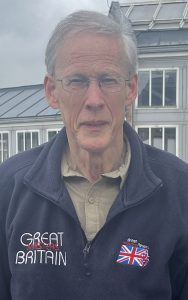
Peter Kennedy, Chairman, Masters Athletics Federation.
You can find out more about The British Masters Athletics Federation and how to join at here.
Storytelling from  &
& 
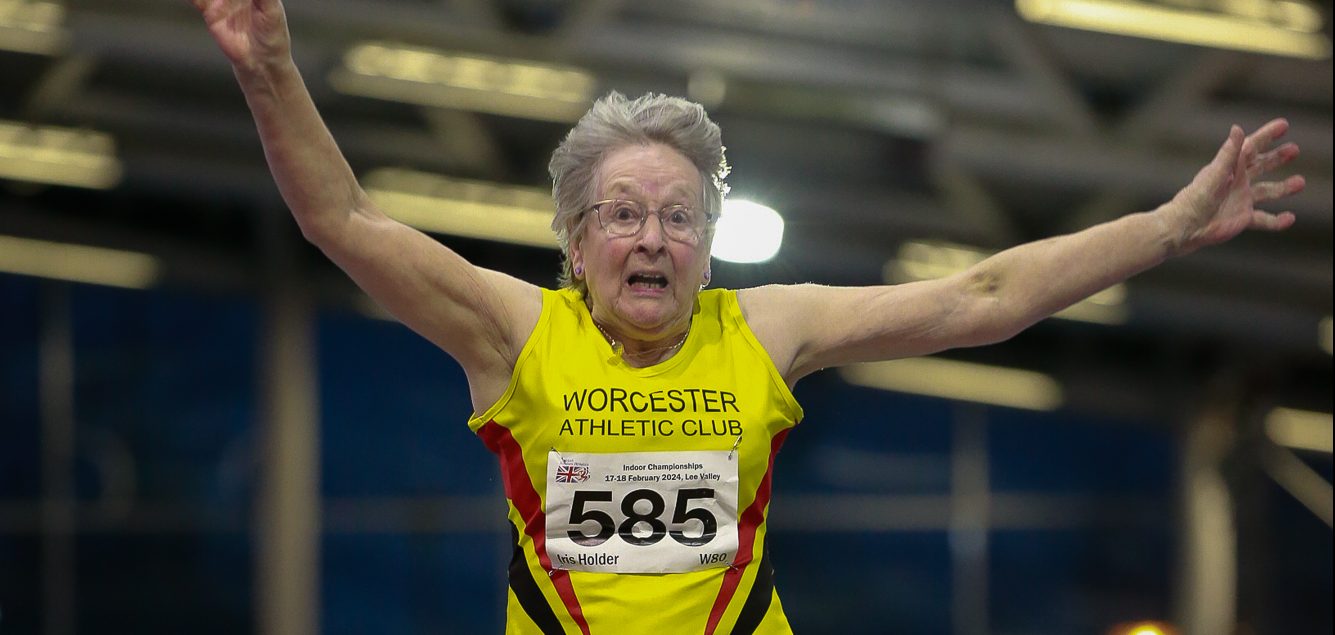
In a recent conversation with Peter Kennedy, Chairman of the British Masters Athletics Federation, a remarkable insight into the world of older athletes emerged. While the spotlight often shines brightly on youth athletes, podium champions, and para-athletes, the realm of older athletes remains largely overlooked. However, as Kennedy passionately articulated, raising the profile of these seasoned competitors could revolutionise how society views ageing and inspire people of all ages to embrace physical activity.
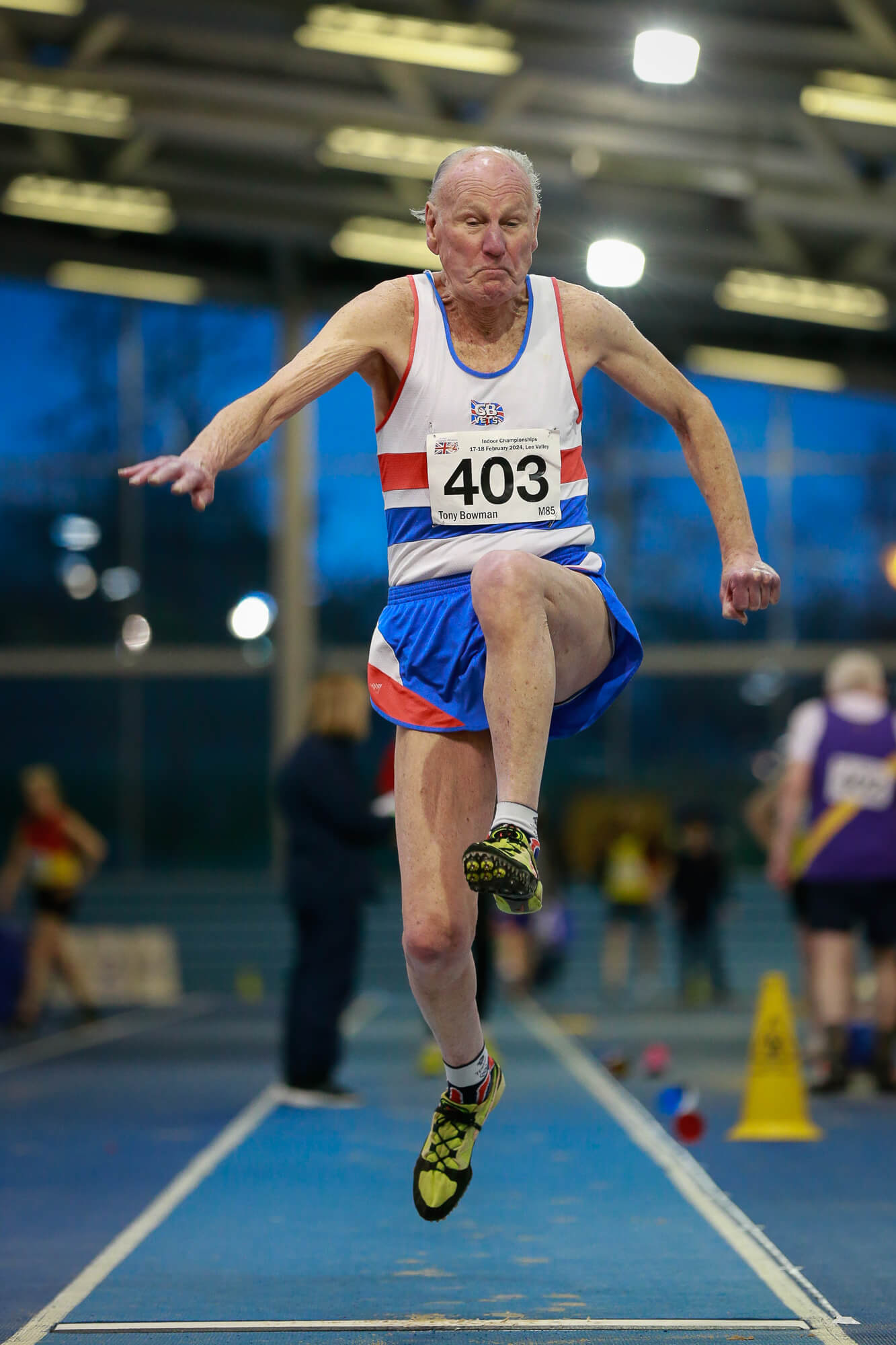
Tony Bowman, 88, long jump, men’s 85-89 year age group (back in action after his stroke). Photography by Alex Rotas.
“The British Masters Athletics Federation, boasting over 5000 active athletes aged 35 and above, serves as a testament to the enduring spirit of competition among older individuals,” Kennedy shared. “What began as a pursuit of personal fitness for many has blossomed into a fiercely competitive arena where age is no barrier to success.”
Kennedy, himself a testament to the longevity of athletic ambition at 72 years old, exemplifies the enduring spirit of older athletes. “I am 72. I am an 800 and 1500 competitor,” he proudly declared. “I still compete nationally, and internationally occasionally getting a gold. This is why I like competing at the world level; I get the competition which challenges me.”
Kennedy fervently advocates for greater recognition and support for older athletes, citing their remarkable achievements and untapped potential. “I really believe we are an untapped asset,” he asserted. “I would call us the 4th pillar of athletes in the UK, and we are just limping along in relation to podium athletics, youth athletes, and para-athletics. We need to be discovered as a force to inspire people to keep moving.”
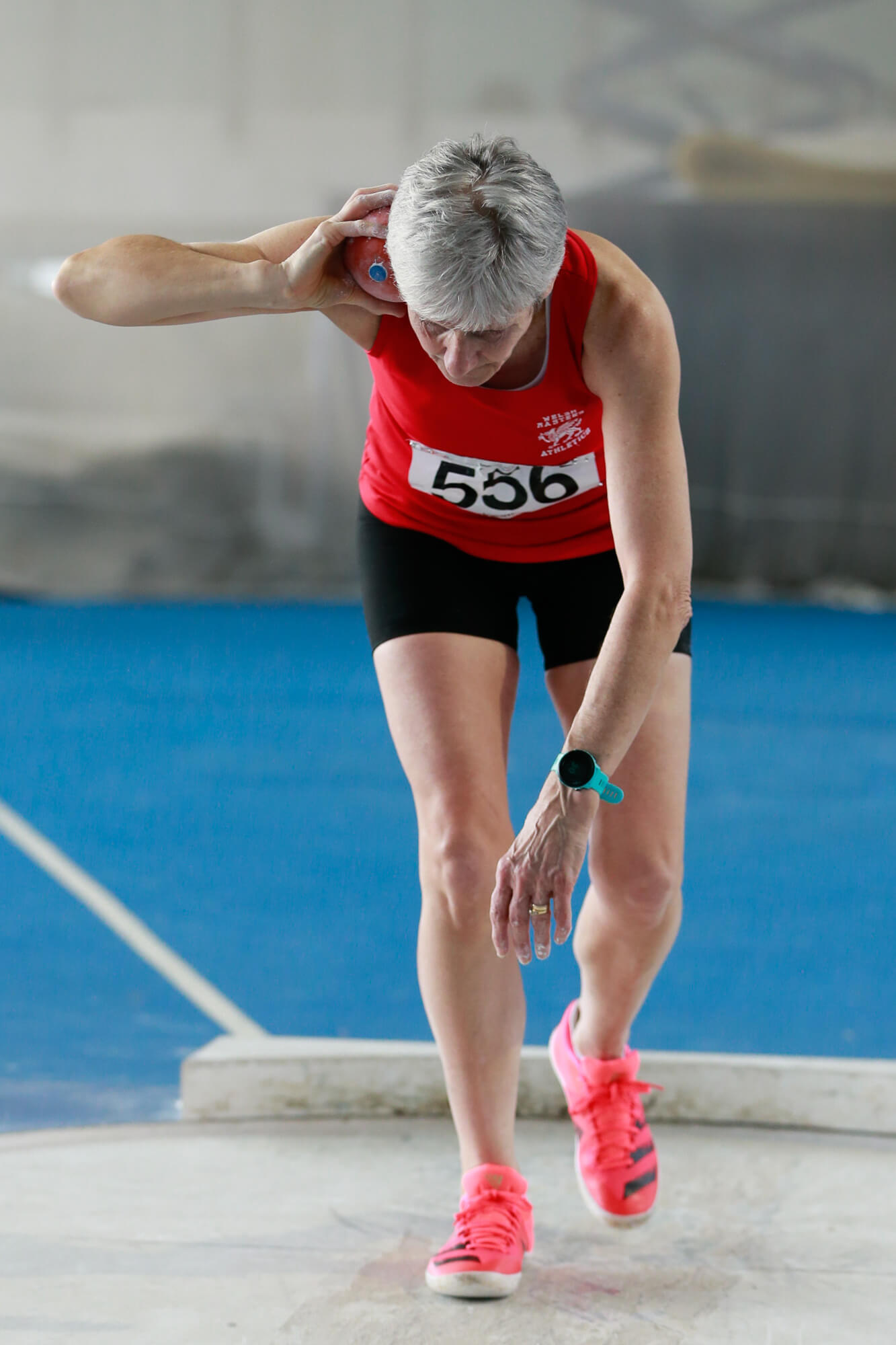
Nicola Buckwell, 67, shot put, women’s 65-69 year age group. Photography by Alex Rotas
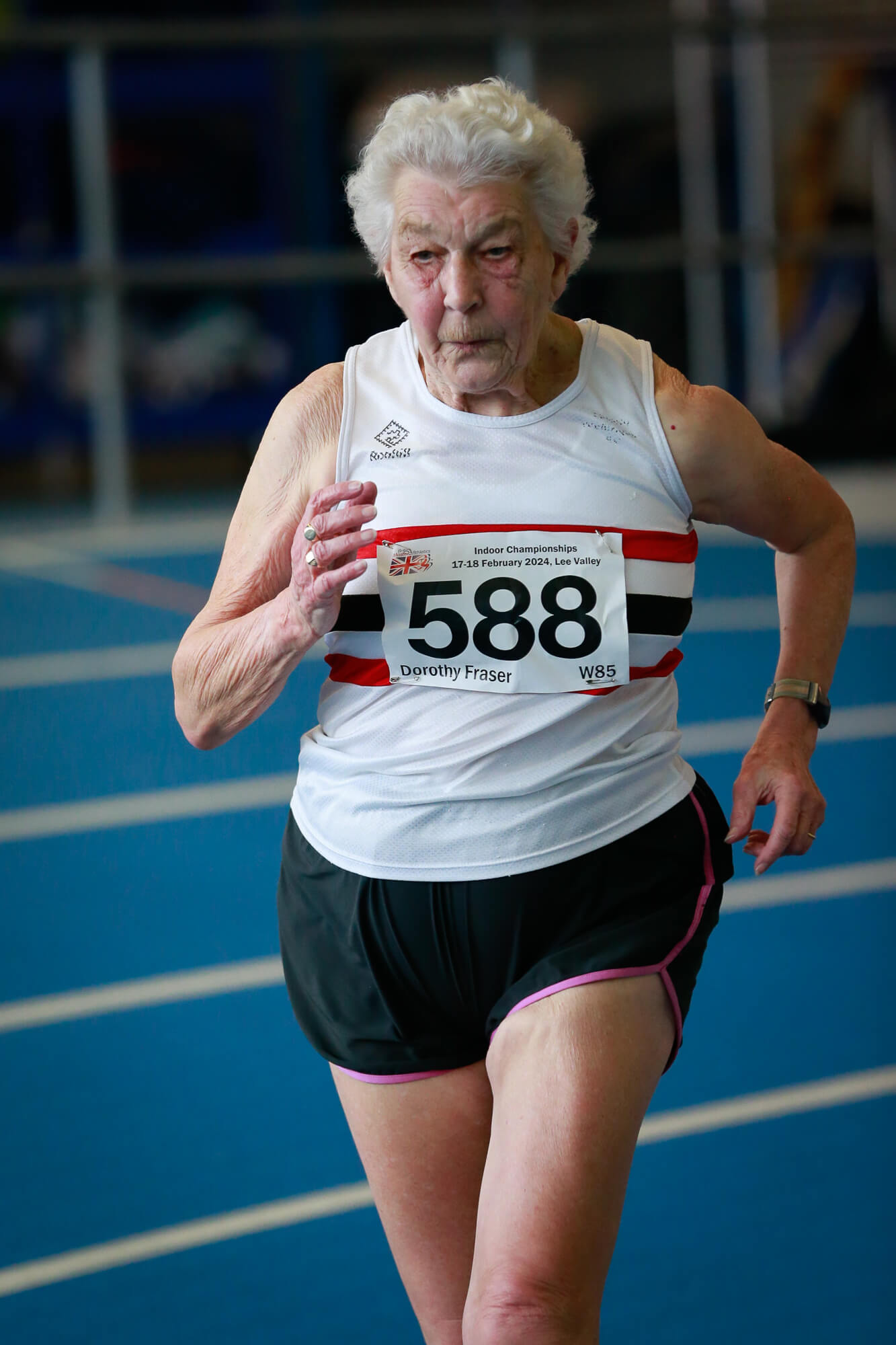
Dorothy Fraser, 87, women’s 20m, 85-89 year old age group. Photography by Alex Rotas
Despite stereotypes suggesting that competitive drive diminishes with age, Kennedy insists otherwise. “No, it is all in the mind,” he stated emphatically. “If you have that competitive streak, it never leaves you.”
Yet, despite their remarkable feats, older athletes often find themselves relegated to the sidelines of mainstream sports coverage. “Older athletes get no recognition at all,” Kennedy lamented. “This is the last bastion, and we need innovation and new thinking from sponsors and TV coverage.”
“Innovations such as sponsored coaching programs and increased media coverage could provide the necessary impetus to propel older athletes into the spotlight,” Kennedy suggested optimistically. “Just as the Olympics and Paralympics captivate global audiences and challenge stereotypes, showcasing the achievements of older athletes could have a similarly transformative effect.”
Moreover, Kennedy emphasises the importance of providing guidance and support for individuals who have never embarked on a fitness journey before. “For those people who have never done anything, I would say start with a plan for doing 25 minutes over a week,” he advised. “Start with small steps. Also, it isn’t just about exercising; it is about seriously raising your heart rate. This intensive exercise is essential.”
Irie Hill, 55, on her way to a new world record in the women’s pole vault, 55-59 year old age group. Photography by Alex Rotas
Additionally, Kennedy highlights the findings of research conducted with Birmingham University, emphasising the importance of basic training elements like balance, even for fit individuals. “What they found was how important balance training was in our older athletes,” he explained. “Even if you are incredibly fit, lack of balance has the ability to impede your performance and pose risks to your overall well-being.”
The age range of members spans from 35 to over 100 years old, reflecting the diverse and inclusive nature of the British Masters Athletics Federation. Moreover, Kennedy highlights that the growth of older athlete groups is not confined to Britain alone but is burgeoning worldwide.
In essence, the journey of older athletes embodies the essence of perseverance, resilience, and the indomitable human spirit. By celebrating their achievements and providing them with the support they deserve, society can unlock the full potential of ageing, inspiring generations to come to embrace the mantra: age is just a number.
More Information

Peter Kennedy, Chairman, Masters Athletics Federation.
You can find out more about The British Masters Athletics Federation and how to join at here.